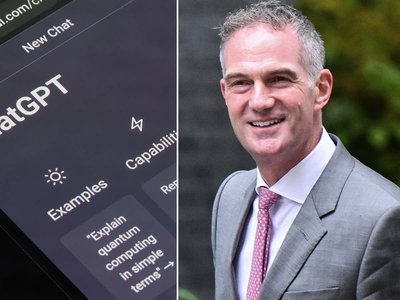
Withdrawal of planned guidance on ME upsets patients
Advocating for behavioural approaches means condition has been relegated to a psychological problem, campaigners say
It was years in the making, involving thousands of scientists, medics, patients and campaigners all with a vested interest in the first landmark guidance on ME of its kind for 14 years.
After much wrangling, the contentious document about myalgic encephalomyelitis (also known as chronic fatigue syndrome) had finally been seen by all stakeholders – but it was not to be.
Earlier this month, hours before publication, the National Institute for Health and Care Excellence (Nice) withdrew the planned guidance and pressed pause on changes that could have affected up to a quarter of a million sufferers and those who treat them, saying: “It has become apparent that a number of professional groups are unwilling to support the guidelines.”
The move has not only left patients distraught but has worsened the already sharp discord within the scientific community over approaches to the poorly understood condition.
On the surface, the delay appeared to pit vulnerable patients – who for decades have suffered prejudice, disbelief and stigma surrounding their illness – against what critics consider to be bad doctors and faulty science.
But a closer look at the controversy points to distinct differences of opinion about the nature of evidence underpinning contested behavioural approaches to ME, and how it has been assimilated and interpreted.
ME is thought to affect up to 250,000 people in the UK. Characterised by debilitating pain and fatigue, it hits one in four sufferers so severely that they are housebound. A constellation of other symptoms, from gastrointestinal issues to nervous-system disorders and sleep problems, can accompany the fatigue.
But what causes the disease remains unclear and consequently no specific treatment exists, although graded exercise therapy (Get) and cognitive behavioural therapy (CBT) have been used in an attempt to manage symptoms.
Nice last issued recommendations on ME in 2007. The new final guidance, seen by the Guardian and broadly in line with a draft published last November, would have abandoned the recommendation to use Get, which involves incremental increases in physical activity to gradually build up tolerance. It also advised that CBT, a talking therapy commonly used to treat anxiety and depression, is not curative for ME.
Charities and patient groups fighting for greater recognition of ME as a medical illness rather than a psychological problem had welcomed these changes. But a number of professional medical groups did not.
At the heart of the dispute is the Pace trial, which evaluated the effectiveness of interventions for ME, including Get and CBT. The results, published in 2011, suggested that both approaches were moderately beneficial for some ME patients, based on patient reports.
Critics, however, say the trial, the biggest of a range of similar studies, was riddled with shortcomings. Trial design concerns included the symptom criteria used to recruit patients in the trial, which critics say was too broad and could have led to people with milder disorders being included.
Another cited drawback is the lack of objective measures to measure outcomes – an activity tracker should have been used to cement subjective measures such as patient reports, said Jonathan Edwards, emeritus professor of connective tissue medicine at University College London and an expert witness for Nice.
Separately, patient surveys have suggested that Get and CBT have actually worsened symptoms in many patients, indicated Dr Charles Shepherd, an honorary medical adviser for the charity ME Association and former member of the Nice guideline committee.
Pace investigators have repeatedly defended the trial’s design and results. Michael Sharpe, a professor of psychological medicine at Oxford University and a principal investigator of the trial, said they used the best criteria available at the time to recruit patients.
The medical research bodies charged with overseeing the trial and its funding had suggested that the burden of patient assessment was too high and, as a consequence, the cumbersome activity trackers of the era were dropped.
Given there is no biological marker that can point to a definite ME diagnosis, recruitment into trials had to be – and still has to be – based on the patient’s report of their symptoms, Sharpe said.
“Why is it then argued that we should believe what the patient says about their symptoms to make the diagnosis – but not believe what they say about their symptoms after treatment? I think there’s a paradox there, and I think if you believe the patient, you believe the patient.”
If patients are to be believed when it comes to improvements, then patients should be believed when it comes to worsening symptoms, the argument goes. But as campaigners point out, there is no avenue for the formal reporting of adverse health events resulting from non-pharmacological treatments such as Get and CBT.
While some patients do not benefit from these therapies, there are others who do, said Trudie Chalder, a professor of cognitive behavioural psychotherapy at King’s College London and another chief investigator of the Pace trial, who has been delivering CBT therapy to such patients for decades.
Patients who get better tended not to be as vocal as those who had had bad experiences, she said.
The crux of the row is the argument – levelled by campaigners – that advocating for these two behavioural approaches means ME has been relegated to a psychological problem, and that has thwarted the investigation of its potential biological origins.
Both Pace investigators interviewed by the Guardian indicated they did not believe ME was a purely psychological condition, however. Meanwhile some campaigners have not ruled out a psychological component to the disease.
Clare Ogden, the head of communications and engagement at the charity Action for ME, said: “Any chronic condition is going to affect how you feel about yourself and your life, mentally, emotionally, spiritually, and … stress will make it worse. But we are mostly seeing … significant physical changes.”
Peter White, a volunteer with the charity group Forward ME, said funding was necessary to investigate the biological reasons behind ME, but much funding was focused on psychological research because people did not know where to begin on the biology. Yet this was because nobody had really ever looked into it, he said, creating a vicious cycle.
“All of the ME groups are supportive of psychological support in order to support the mental health of the sufferer,” said White. “The issue comes in when that support is presented as a [curative] treatment.”
Edwards agreed that nobody really had a clue where to start when it came to research. “But all this focus on CBT and exercise therapy has diverted attention from doing something useful for the patients,” he said.
Chalder, the CBT practitioner, said it was unhelpful to see the debate in black and white.
“This kind of dualistic thinking – it’s either psychological or physical – is not particularly helpful when you think about any disease. There are going to be a number of different things that are contributing to symptoms … and the same would be said for ME,” she said.
Meanwhile, the hunt for the biological/genetic underpinnings of ME is under way. DecodeME, the world’s largest DNA study of ME, is due to launch this autumn, and its findings will be closely watched.
After much wrangling, the contentious document about myalgic encephalomyelitis (also known as chronic fatigue syndrome) had finally been seen by all stakeholders – but it was not to be.
Earlier this month, hours before publication, the National Institute for Health and Care Excellence (Nice) withdrew the planned guidance and pressed pause on changes that could have affected up to a quarter of a million sufferers and those who treat them, saying: “It has become apparent that a number of professional groups are unwilling to support the guidelines.”
The move has not only left patients distraught but has worsened the already sharp discord within the scientific community over approaches to the poorly understood condition.
On the surface, the delay appeared to pit vulnerable patients – who for decades have suffered prejudice, disbelief and stigma surrounding their illness – against what critics consider to be bad doctors and faulty science.
But a closer look at the controversy points to distinct differences of opinion about the nature of evidence underpinning contested behavioural approaches to ME, and how it has been assimilated and interpreted.
ME is thought to affect up to 250,000 people in the UK. Characterised by debilitating pain and fatigue, it hits one in four sufferers so severely that they are housebound. A constellation of other symptoms, from gastrointestinal issues to nervous-system disorders and sleep problems, can accompany the fatigue.
But what causes the disease remains unclear and consequently no specific treatment exists, although graded exercise therapy (Get) and cognitive behavioural therapy (CBT) have been used in an attempt to manage symptoms.
Nice last issued recommendations on ME in 2007. The new final guidance, seen by the Guardian and broadly in line with a draft published last November, would have abandoned the recommendation to use Get, which involves incremental increases in physical activity to gradually build up tolerance. It also advised that CBT, a talking therapy commonly used to treat anxiety and depression, is not curative for ME.
Charities and patient groups fighting for greater recognition of ME as a medical illness rather than a psychological problem had welcomed these changes. But a number of professional medical groups did not.
At the heart of the dispute is the Pace trial, which evaluated the effectiveness of interventions for ME, including Get and CBT. The results, published in 2011, suggested that both approaches were moderately beneficial for some ME patients, based on patient reports.
Critics, however, say the trial, the biggest of a range of similar studies, was riddled with shortcomings. Trial design concerns included the symptom criteria used to recruit patients in the trial, which critics say was too broad and could have led to people with milder disorders being included.
Another cited drawback is the lack of objective measures to measure outcomes – an activity tracker should have been used to cement subjective measures such as patient reports, said Jonathan Edwards, emeritus professor of connective tissue medicine at University College London and an expert witness for Nice.
Separately, patient surveys have suggested that Get and CBT have actually worsened symptoms in many patients, indicated Dr Charles Shepherd, an honorary medical adviser for the charity ME Association and former member of the Nice guideline committee.
Pace investigators have repeatedly defended the trial’s design and results. Michael Sharpe, a professor of psychological medicine at Oxford University and a principal investigator of the trial, said they used the best criteria available at the time to recruit patients.
The medical research bodies charged with overseeing the trial and its funding had suggested that the burden of patient assessment was too high and, as a consequence, the cumbersome activity trackers of the era were dropped.
Given there is no biological marker that can point to a definite ME diagnosis, recruitment into trials had to be – and still has to be – based on the patient’s report of their symptoms, Sharpe said.
“Why is it then argued that we should believe what the patient says about their symptoms to make the diagnosis – but not believe what they say about their symptoms after treatment? I think there’s a paradox there, and I think if you believe the patient, you believe the patient.”
If patients are to be believed when it comes to improvements, then patients should be believed when it comes to worsening symptoms, the argument goes. But as campaigners point out, there is no avenue for the formal reporting of adverse health events resulting from non-pharmacological treatments such as Get and CBT.
While some patients do not benefit from these therapies, there are others who do, said Trudie Chalder, a professor of cognitive behavioural psychotherapy at King’s College London and another chief investigator of the Pace trial, who has been delivering CBT therapy to such patients for decades.
Patients who get better tended not to be as vocal as those who had had bad experiences, she said.
The crux of the row is the argument – levelled by campaigners – that advocating for these two behavioural approaches means ME has been relegated to a psychological problem, and that has thwarted the investigation of its potential biological origins.
Both Pace investigators interviewed by the Guardian indicated they did not believe ME was a purely psychological condition, however. Meanwhile some campaigners have not ruled out a psychological component to the disease.
Clare Ogden, the head of communications and engagement at the charity Action for ME, said: “Any chronic condition is going to affect how you feel about yourself and your life, mentally, emotionally, spiritually, and … stress will make it worse. But we are mostly seeing … significant physical changes.”
Peter White, a volunteer with the charity group Forward ME, said funding was necessary to investigate the biological reasons behind ME, but much funding was focused on psychological research because people did not know where to begin on the biology. Yet this was because nobody had really ever looked into it, he said, creating a vicious cycle.
“All of the ME groups are supportive of psychological support in order to support the mental health of the sufferer,” said White. “The issue comes in when that support is presented as a [curative] treatment.”
Edwards agreed that nobody really had a clue where to start when it came to research. “But all this focus on CBT and exercise therapy has diverted attention from doing something useful for the patients,” he said.
Chalder, the CBT practitioner, said it was unhelpful to see the debate in black and white.
“This kind of dualistic thinking – it’s either psychological or physical – is not particularly helpful when you think about any disease. There are going to be a number of different things that are contributing to symptoms … and the same would be said for ME,” she said.
Meanwhile, the hunt for the biological/genetic underpinnings of ME is under way. DecodeME, the world’s largest DNA study of ME, is due to launch this autumn, and its findings will be closely watched.











